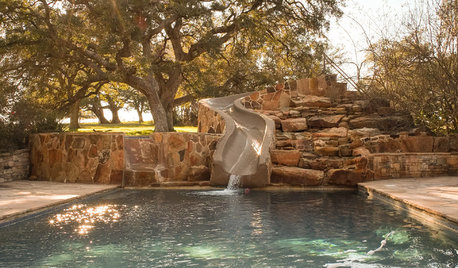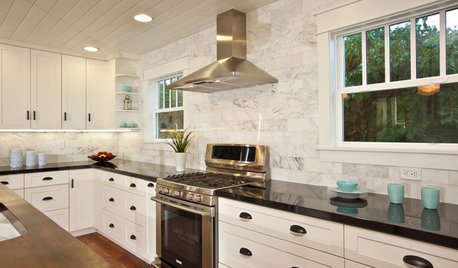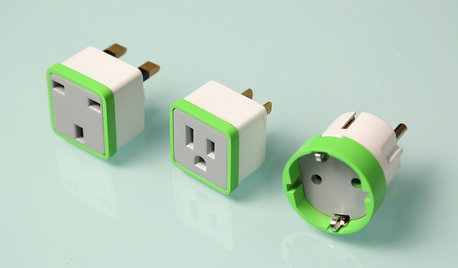Electric Slide-in Range - GE
olivertwistkitchen
11 years ago
Related Stories

KITCHEN DESIGNHow to Find the Right Range for Your Kitchen
Range style is mostly a matter of personal taste. This full course of possibilities can help you find the right appliance to match yours
Full Story
HOUSEKEEPINGHow to Clean Your Range and Oven
Experts serve up advice on caring for these kitchen appliances, which work extra hard during the holidays
Full Story
KITCHEN APPLIANCESWhat to Consider When Adding a Range Hood
Get to know the types, styles and why you may want to skip a hood altogether
Full Story
REMODELING GUIDESPocket Doors and Sliding Walls for a More Flexible Space
Large sliding doors allow you to divide open areas or close off rooms when you want to block sound, hide a mess or create privacy
Full Story
POOLSPool Slides: What's Possible, Who Can Build It and What It Will Cost
These slippery slopes will make a splash and offer an exhilarating ride that's the stuff of childhood dreams
Full Story
KITCHEN APPLIANCESFind the Right Cooktop for Your Kitchen
For a kitchen setup with sizzle, deciding between gas and electric is only the first hurdle. This guide can help
Full Story
KITCHEN DESIGNHow to Pick Your Important Kitchen Appliances
Find the ideal oven, refrigerator, range and more without going nutty — these resources help you sort through your the appliance options
Full Story
LIFEHow to Prepare for and Live With a Power Outage
When electricity loss puts food, water and heat in jeopardy, don't be in the dark about how to stay as safe and comfortable as possible
Full Story
HOME TECHPlug Into Home Power Monitors That Pay for Themselves
Stop throwing away money on wasted electricity with help from new monitors that work with your phone or computer
Full Story
GREEN BUILDINGGoing Solar at Home: Solar Panel Basics
Save money on electricity and reduce your carbon footprint by installing photovoltaic panels. This guide will help you get started
Full StorySponsored
Leading Interior Designers in Columbus, Ohio & Ponte Vedra, Florida
More Discussions








fauguy
jwvideo
Related Professionals
Ballenger Creek Kitchen & Bathroom Designers · Freehold Kitchen & Bathroom Designers · Town 'n' Country Kitchen & Bathroom Designers · Folsom Kitchen & Bathroom Remodelers · Franconia Kitchen & Bathroom Remodelers · Idaho Falls Kitchen & Bathroom Remodelers · Rochester Kitchen & Bathroom Remodelers · Santa Fe Kitchen & Bathroom Remodelers · Sun Valley Kitchen & Bathroom Remodelers · Warren Kitchen & Bathroom Remodelers · Livingston Cabinets & Cabinetry · Prior Lake Cabinets & Cabinetry · Roanoke Cabinets & Cabinetry · Vermillion Cabinets & Cabinetry · Saint James Cabinets & Cabinetryweedmeister
jwvideo
weedmeister
olivertwistkitchenOriginal Author